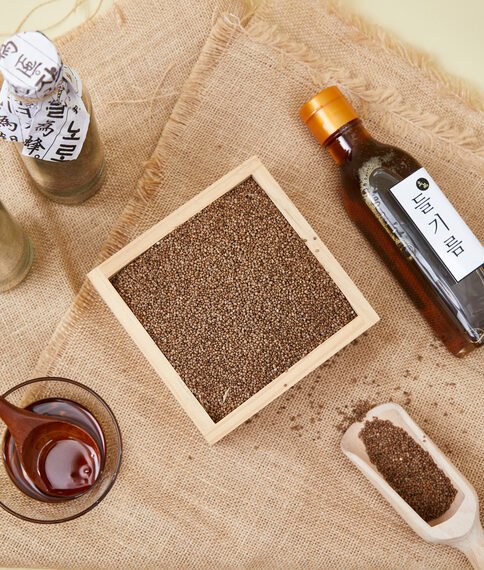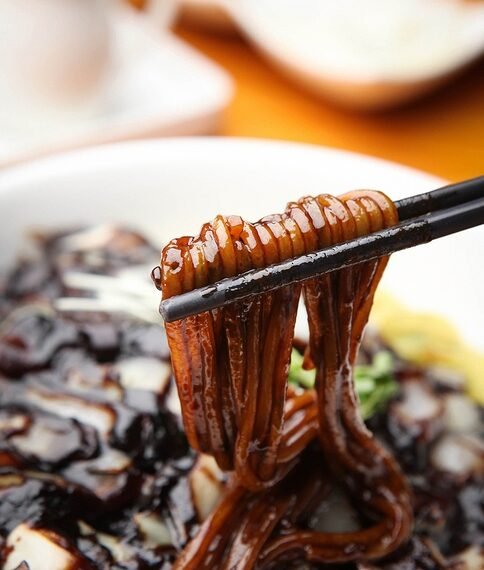In an age where American consumers are increasingly becoming interested in exploring new and diverse cuisines, Korean American restaurateurs are embracing the opportunity to introduce diners to authentic Korean dishes by using their original names. Whether it’s a popular grocery chain like Trader Joe’s or local restaurants in the Bay Area, these entrepreneurs are committed to breaking away from the trend of anglicizing or creatively renaming Korean dishes. By preserving the integrity and cultural identity of these dishes, they hope to not only educate their customers but also elevate Korean cuisine to the mainstream and create a new narrative that is unique and exciting.

The Rise of Korean Food in America
Introduction to the popularity of Korean food in the US
Korean food has seen a significant rise in popularity in the United States, with more and more Americans discovering and embracing the unique flavors and dishes of Korean cuisine. From traditional dishes like kimchi and bibimbap to popular street foods like kimbap and tteokbokki, Korean food has captured the taste buds of many Americans. The increased interest in Korean food can be attributed to various factors, including the influence of big-box companies in introducing Korean dishes and the efforts of Korean American restaurateurs in shaping the perception of Korean food.
The influence of big-box companies in introducing Korean dishes
Big-box companies play a crucial role in introducing Korean dishes to a wider audience in the United States. Companies like Trader Joe’s have been instrumental in making Korean food more accessible to the average American consumer. One notable example is Trader Joe’s offering of frozen kimbap, a traditional Korean dish, which became incredibly popular and sold out quickly. What makes this even more significant is that Trader Joe’s chose to use the dish’s real name, highlighting the company’s commitment to authenticity and cultural representation.
The decision by big-box companies to use the actual names of Korean dishes is essential in creating familiarity and reaching a wider audience. When a Korean dish is recognized by its true name, it moves away from being perceived as a foreign and exotic cuisine and becomes something familiar and approachable. This shift in perception is crucial in making Korean food more mainstream and appealing to a broader customer base.
Naming Matters
The impact of using the dish’s real name
Using the real name of a Korean dish has a profound impact on how it is perceived by consumers. When a dish is identified by its authentic name, it gains legitimacy and authenticity in the eyes of the public. It is no longer a mere imitation or adaptation of another culture’s food but a dish with its own identity and cultural significance.
By using the dish’s real name, big-box companies and restaurants alike contribute to the preservation and appreciation of Korean food and culture. It gives Korean cuisine the respect and recognition it deserves, allowing it to stand on its own without being overshadowed or diluted by other cuisines.
Creating familiarity and reaching a wider audience
Using the real names of Korean dishes creates familiarity and bridges the gap between different cultures. When customers encounter an unfamiliar name, it piques their curiosity and encourages them to explore and learn more about Korean cuisine. This not only deepens their understanding but also fosters a sense of cultural appreciation and inclusivity.
By reaching a wider audience, Korean food can overcome stereotypes and misconceptions. It allows individuals who may not have had exposure to Korean cuisine to have a genuine and authentic experience. This, in turn, helps in breaking down cultural barriers and promoting diversity and inclusivity through food.

Korean American Restaurateurs Leading the Way
The role of Korean American restaurateurs in shaping the perception of Korean food
Korean American restaurateurs have played a significant role in shaping the perception of Korean food in the United States. As owners and operators of Korean restaurants, they have the unique opportunity to showcase the richness and authenticity of Korean cuisine to a diverse customer base.
By maintaining the integrity of traditional Korean recipes and ingredients, Korean American restaurateurs provide an authentic dining experience that captivates customers. They take pride in preserving traditional cooking techniques and flavors, demonstrating their commitment to showcasing the true essence of Korean food.
Appealing to a younger generation of Koreans and non-Koreans
One notable aspect of Korean American restaurateurs’ influence is their ability to appeal to a younger generation of Koreans and non-Koreans. Through contemporary and innovative approaches, these restaurateurs have successfully attracted a younger demographic, making Korean food more accessible and appealing to a wider audience.
By incorporating modern twists and creative presentations, Korean American restaurateurs have reimagined traditional dishes, making them exciting and relevant to a younger generation. This reinvention breathes new life into Korean cuisine, attracting not only those who are familiar with Korean food but also those who are curious and open to exploring new culinary experiences.
Queens: Introducing Korean Food and Culture
The intentional naming of products and dishes in romanized Korean
One example of Korean American restaurateurs introducing Korean food and culture is Queens, a now-closed restaurant and storefront that continues to operate as an e-commerce site and pop-up. The co-owners, Clara Lee and Eddo Kim, intentionally named their products and dishes exactly as they would be named, pronounced, or described in Korean.
By using the romanized Korean names, Queens aimed to educate and inform their customers about the distinctiveness of Korean food. This deliberate choice fostered genuine and organic conversations, especially with non-Korean patrons, allowing for a deeper understanding and appreciation of Korean cuisine.
Fostering organic conversations and deepening understanding
The intentional naming of products and dishes in romanized Korean at Queens created an environment that encouraged organic conversations and deeper understanding. Customers would often ask questions about the names of dishes and ingredients, leading to meaningful exchanges and learning moments.
Queens recognized the importance of these conversations in making Korean food and ingredients more mainstream. By providing accurate and authentic information, they helped debunk misconceptions and broaden the knowledge and appreciation of Korean cuisine.

Ilcha: Connecting to Korean Drinking Culture
Using Korean names to highlight the connection to Korean drinking culture
At Ilcha, a Korean restaurant and bar in the Marina, the use of Korean names extends beyond just the names of dishes and ingredients. The co-owner and chef, Kummi Kim, deliberately uses Korean names throughout her establishment to highlight the connection to Korean drinking culture.
By using original Korean words and names, Ilcha immerses customers in the vibrant and lively Korean drinking culture. It allows them to experience not only the food but also the traditions and customs associated with Korean dining and socializing.
Featuring Korean spirits and pushing the culture forward
Ilcha goes beyond just using Korean names to showcase the connection to Korean drinking culture. The restaurant also features Korean spirits, such as soju and makgeolli, as well as artisanal spirits made by Koreans in America. This deliberate choice helps promote Korean drinks and push the culture forward.
By introducing customers to a wider variety of Korean spirits, Ilcha exposes them to the richness and diversity of Korean drinking culture. It creates an exciting and dynamic experience that goes beyond the typical American dining and drinking traditions.
Making Korean Food Mainstream
The goal of Korean restaurateurs and producers in creating a new narrative
While making Korean food part of the mainstream may not be the main goal for Korean restaurateurs and producers, it is certainly a welcomed outcome. Their efforts in preserving the authentic names and flavors of Korean dishes contribute to a new narrative surrounding Korean cuisine.
Korean producers, creators, and restaurateurs are not simply copying and pasting what is happening in Korea but are creating a unique and positive divergence. By introducing new flavors, innovative presentations, and exciting dining experiences, they are shaping the future of Korean food in America.
Diverging from traditional Korean food and creating exciting new experiences
Korean restaurateurs and producers are not afraid to diverge from traditional Korean food and create new experiences. By infusing creativity and innovation into their menus and recipes, they attract a broader audience and keep customers coming back for more.
This approach to diverging from tradition while preserving the core essence of Korean cuisine ensures that Korean food remains exciting, relevant, and ever-evolving. It allows for a continuous exploration of flavors, techniques, and cultural influences, captivating the taste buds of a diverse and dynamic customer base.
Conclusion
The importance of preserving the original names of Korean dishes
The rise of Korean food in America is undeniable, and it is crucial to preserve the original names of Korean dishes. Using the real names not only adds authenticity and cultural significance but also fosters a deeper understanding and appreciation of Korean cuisine.
By preserving the original names, Korean food can break free from the perception of being a spin-off or imitation of other cuisines. It can stand on its own as a distinct and unique culinary tradition, contributing to the diversity and richness of the American food landscape.
The future of Korean food in America
The future of Korean food in America is bright and promising. The efforts of Korean American restaurateurs, big-box companies, and producers are instrumental in making Korean food more accessible, mainstream, and beloved by a wider audience.
As more people discover the flavors and delights of Korean cuisine, the demand for authentic and innovative Korean dishes will continue to grow. Korean food will become an integral part of the American culinary scene, offering a taste of Korea’s vibrant culture and traditions to all who indulge in its delectable offerings.









